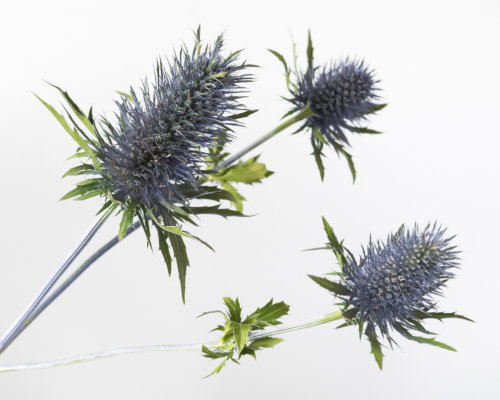
Ask Ella: Don’t Be Alarmed By Thistle’s Thorns
Ask Ella is a recurring Garden Collage feature where we ask our in-house florist, Ella Stavonsky, about floral design– including the history of, origin, and maintenance that goes into some of the most intriguing flowers on the market today. This column is dedicated exclusively to common and rare varieties of flowers you’re likely to find at your local market. This week, we spotlight thistle, whose prickly appearance shouldn’t be off-putting.
***
The term “thistle” is a far-reaching one, as it refers to any plant within the Asteraceae family that grows with the signature sharp points along the outside (a protective evolutionary measure that ensures they are not decimated by grazing herbivores). Culturally, thistle is the floral emblem of Scotland, whose people find pride in the weed’s defenses. According to legend, a Norse army was sneaking up on a resting band of Scots when one of the Nords stepped on a thistle plant, let out a cry, and alerted the Scots of the enemy presence, thereby saving the Scots from certain massacre and forever securing the humble plant in the hearts of many.
As far as using thistle in arrangements, it’s hard to go wrong. We’ve used thistle in just about every which way you can– it’s one of the most versatile options out there, despite its prickly, spiny appearance. It’s an especially-useful option if you’re looking to make an affordable arrangement; a simple gathering with one other type of flower (like roses) and thistle can look like a complete, full bouquet. If you’re looking for specific flowers you can’t go wrong with soft, very showy flowers like dahlias and peonies (which look especially stunning against thistle in white). For greens, look to options with vertical height and structural integrity, like sprigs of rosemary or lavender. “It’s such a nice flower,” Ella adds. “It looks nice with almost any color…” Thistle is a long lasting plant (“They can last up to ten days!” Ella tells us) and can be dried when other elements of the bouquet begin to fade.









































